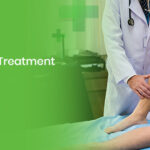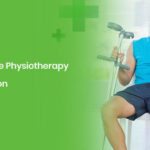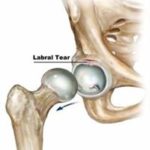Managing Restless Leg Syndrome Pregnancy
Pregnancy is a magical, life-changing journey, but let’s be honest it’s not always a smooth ride. Between the morning sickness, backaches, and swollen ankles, there’s one more thing that can make those nine months feel a bit more challenging: restless leg syndrome (RLS). And if you’ve ever found yourself tossing and turning in bed, kicking your legs around, desperate for some relief, you know exactly what we’re talking about.
Relieving Restless Leg Syndrome During Pregnancy: Tips for Comfort and Relief can seem like an impossible task, but fear not! There are ways to manage this common condition and get back to enjoying your pregnancy without the constant discomfort. In this article, we’ll dive into everything you need to know about RLS, its causes, and most importantly, how to relieve it during pregnancy.
What is Restless Leg Syndrome During Pregnancy?
Restless Leg Syndrome (RLS) during pregnancy, often referred to as “Willis-Ekbom Disease,” is a neurological condition that causes an uncontrollable urge to move your legs. It’s usually accompanied by uncomfortable sensations like tingling, crawling, or aching especially when you’re at rest. It’s more than just an annoying itch; it can interfere with sleep and daily life, making you feel restless and frustrated.
Interestingly, RLS during pregnancy is most common in the second and third trimesters. While it’s not entirely clear why some women experience it, researchers believe hormones and changes in blood circulation may be contributing factors.
Relieving Restless Leg Syndrome in Pregnancy: Tips
Now that we know what RLS is, let’s explore some of the most effective ways recommended by your healthcare provider to relieve those restless legs and restore some peace to your nights.
1. Stretching and Exercise: Get Moving!
Movement is your best friend when it comes to easing RLS. Gentle stretches or light exercises can help relax the muscles and improve circulation, preventing that constant urge to move.
- Stretching: Try doing simple leg stretches before bed to relax your muscles. Focus on the calves, hamstrings, and thighs.
- Walking: If you’re able to, taking a short walk during the day can help with blood circulation and alleviate symptoms.
- Yoga: Certain yoga poses, like the “legs up the wall” pose, can work wonders to stretch your legs and relieve tension.
2. Hot and Cold Therapy: Feel the Relief
Sometimes, all your legs need is a little heat or cold to calm them down. Try these simple remedies:
- Warm Bath: Soaking in a warm bath can relax your muscles and ease RLS symptoms. Add Epsom salts for extra relief.
- Heating Pad: Applying a heating pad to your legs before bed can work wonders, especially if you feel tightness or cramping.
- Cold Compress: Some women find that cold compresses on their legs relieve the discomfort caused by RLS. It’s all about trial and error!
3. Dietary Changes: Fuel for Your Legs
What you eat can play a significant role in managing restless leg syndrome. During pregnancy, your nutritional needs are higher, and certain deficiencies could be contributing to your RLS symptoms.
- Iron: Low iron levels are often linked to RLS. Make sure you’re getting enough iron-rich foods like spinach, beans, and red meat.
- Magnesium: Magnesium deficiency has also been associated with RLS. Incorporate magnesium-rich foods like nuts, seeds, and leafy greens into your diet.
- Folate and Vitamin B12: These vitamins support nerve health and can help reduce the severity of RLS.
4. Sleep Hygiene: Restful Nights Are Possible
Pregnancy already makes sleep difficult, but when RLS is added to the mix, getting quality rest can seem like a distant dream. Fortunately, practicing good sleep hygiene can help:
- Establish a Routine: Go to bed at the same time every night to regulate your sleep cycle.
- Avoid Caffeine: Caffeine is a known trigger for RLS, so try cutting back, especially in the afternoon and evening.
- Create a Relaxing Bedtime Environment: Make your bedroom a sanctuary for sleep. Dim the lights, reduce noise, and try using aromatherapy to help you unwind.
5. Massage Therapy: Soothing Relief
Who doesn’t love a good massage? Whether it’s your partner giving you a foot rub or you seeking professional help, massage can help alleviate the discomfort of RLS.
- Leg Massage: Gently massaging your legs can improve circulation and ease tension. Be sure to use slow, firm strokes to help release tight muscles.
- Foot Reflexology: Some women find relief by focusing on reflexology points in the feet. It’s a simple, relaxing way to target specific areas and relieve RLS symptoms.
Restless Leg Syndrome Pregnancy Causes: Why Does It Happen?
As much as we wish we could pinpoint one clear cause of RLS during pregnancy, it’s a bit more complicated than that. While we don’t have all the answers, we do know a few key factors that can contribute to the condition.
1. Hormonal Changes
Pregnancy is a hormone rollercoaster, and fluctuating hormone levels are one of the most common causes of RLS. Progesterone, in particular, is known to increase during pregnancy and may play a role in nerve and muscle function.
2. Iron Deficiency
As mentioned earlier, low iron levels are often linked to RLS. Pregnancy can deplete your iron stores, which may contribute to the development of restless leg syndrome. This is why it’s essential to maintain a balanced diet and, if needed, take iron supplements as advised by your doctor.
3. Circulatory Changes
Pregnancy also increases blood volume, and as your body works harder to pump blood, you might experience poor circulation. This can lead to the sensations that trigger RLS, especially in the legs.
4. Genetics
If you have a family history of RLS, there’s a higher chance that you might experience it during pregnancy. Genetics can play a role in how your body responds to changes in pregnancy.
FAQs About Relieving Restless Leg Syndrome During Pregnancy
Q: Is Restless Leg Syndrome dangerous during pregnancy?
A: No, RLS is not harmful to your pregnancy, but it can make it harder for you to sleep and feel comfortable. It’s mostly a nuisance, but manageable with the right treatments.
Q: Can I take medication for RLS while pregnant?
A: Always consult your doctor before taking any medication during pregnancy. While some treatments are available for RLS, many are not recommended during pregnancy due to potential risks.
Q: Does RLS go away after pregnancy?
A: In most cases, RLS symptoms improve or disappear after childbirth. However, some women may continue to experience mild symptoms even after pregnancy.
Q: How can I prevent RLS during pregnancy?
A: While you can’t always prevent RLS, practicing good sleep hygiene, eating a balanced diet, staying active, and managing stress can help reduce your risk.
Conclusion
Relieving Restless Leg Syndrome During Pregnancy: Tips for Comfort and Relief isn’t a one-size-fits-all solution. It’s all about finding what works for you. Whether it’s through gentle exercises, dietary changes, or a cozy warm bath, there are plenty of ways to soothe your restless legs and get a good night’s rest. So, hang in there, mama! With a bit of patience and the right strategies, you can manage RLS and make your pregnancy journey a little more comfortable.











